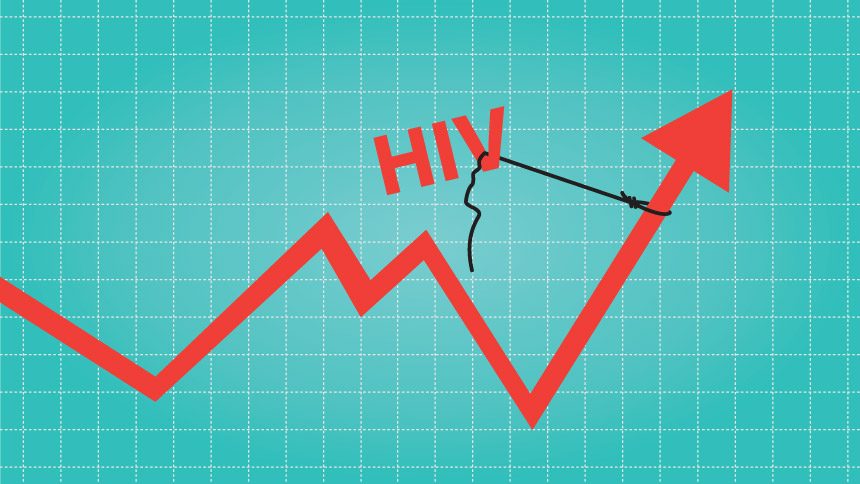The U.S. Latino community faces an HIV/AIDS crisis, but chances are, you didn’t know it.
Over the past years, the estimated rate of new HIV infections overall in the U.S. has fallen steadily — together with public concern. Highly effective prevention and treatment for HIV-positive individuals have led the way.
But while much progress has been achieved, the same can’t be said for Latinos.
Estimated HIV infections and diagnoses reported by the Centers for Disease Control and Prevention, have increased among the approximately 60 million U.S. Latinos — the country’s youngest and largest minority group. Between 2011 and 2015, the rate of increase of new HIV diagnoses ranged from 4% among all Latinos, to 22% among younger Latino gay and bisexual men ages 13-29. In contrast, diagnoses fell by a significant 5% overall in the U.S.
Today, Latinos account for approximately a quarter of all new HIV diagnoses in the country. Yet the Latino epidemic has remained largely invisible, eclipsed by biomedical advances in powerful prevention and treatment tools known as PrEP and U=U. But data show that HIV-positive Latinos and other minorities achieve viral suppression at lower rates than their non-minority counterparts do. An estimated 73% of PrEP users are white, while three-quarters of new HIV infections occur among people of color.
Amid increasing HIV diagnoses among Latinos, key population segments at greatest risk for infection are being hit the hardest, among them young Latino gay and bisexual men and transgender Latinx, particularly trans women. These segments are faced with elevated risk to acquire HIV in combination with access barriers to HIV prevention and treatment services — the perfect conditions for HIV to spread.
The Bronx is not only the poorest county in the city, it also is predominantly made up of Latinos (56%), and it has a large percentage of people under 30. There, the Adolescent AIDS Program (AAP), founded in 1987 at Children’s Hospital of Montefiore Medical Center, is the nation’s first HIV/AIDS program specifically focused on treatment and prevention services for HIV-positive and at-risk youth. The program serves several hundred youth ages 13 to 28. Many are Latino.
As a medical provider at AAP, I know first-hand that the HIV/AIDS crisis is far from over, the Latino HIV crisis has yet to receive a strong public health response.
While the clock ticks, the federal budget request for fiscal year 2019 contains cuts to CDC’s HIV prevention and research funding by $35 million compared to 2018 levels.
Let’s put it this way: The young and growing Latino communities represent the future of the health and well-being in the United States. Ending the HIV/AIDS epidemic in the U.S. means prioritizing national efforts to address the crisis among Latinos.
Guilamo-Ramos is a professor at NYU’s Silver School of Social Work, director of its Center for Latino Adolescent and Family Health (CLAFH), and a nurse practitioner at the Adolescent AIDS Program at Children’s Hospital of Montefiore Medical Center. Thimm-Kaiser is an assistant research scientist at CLAFH.
This Article first appeared at www.nydailynews.com. Copyright © 2018 Daily News, L.P.


